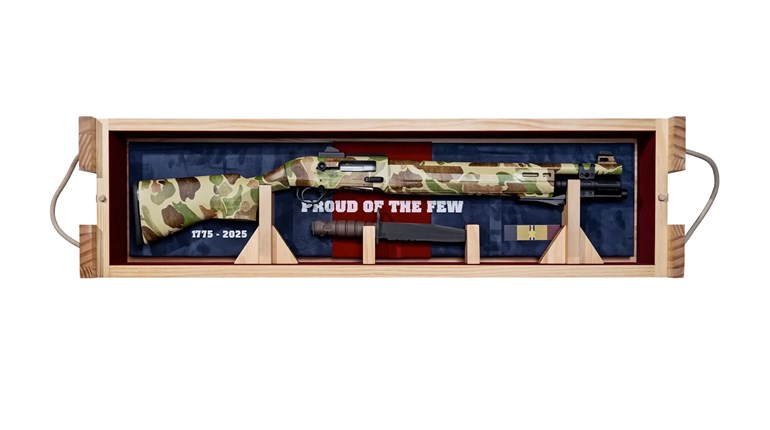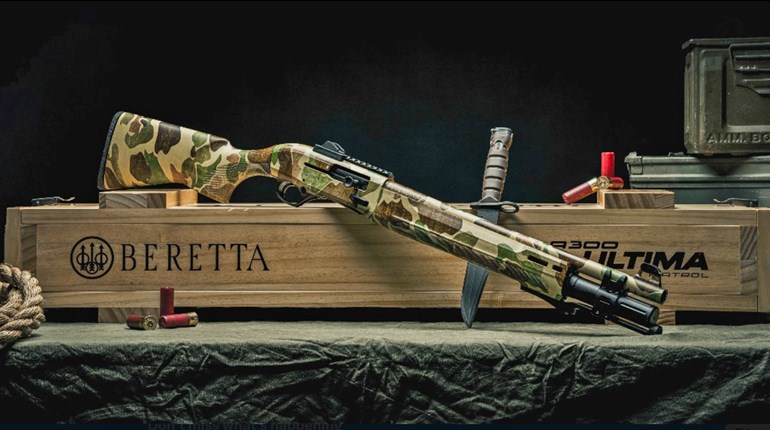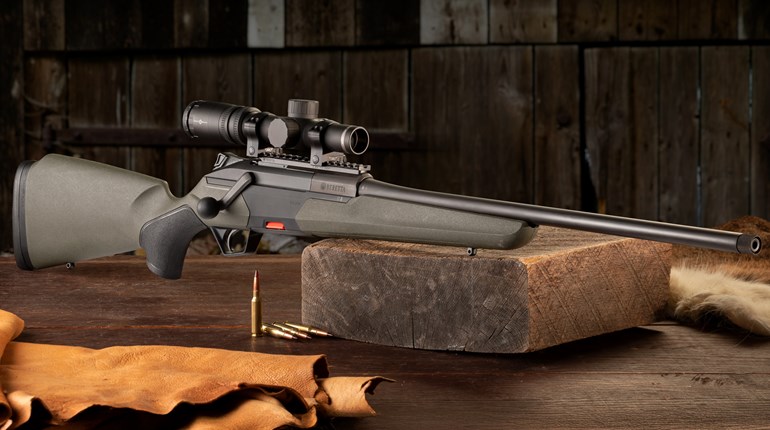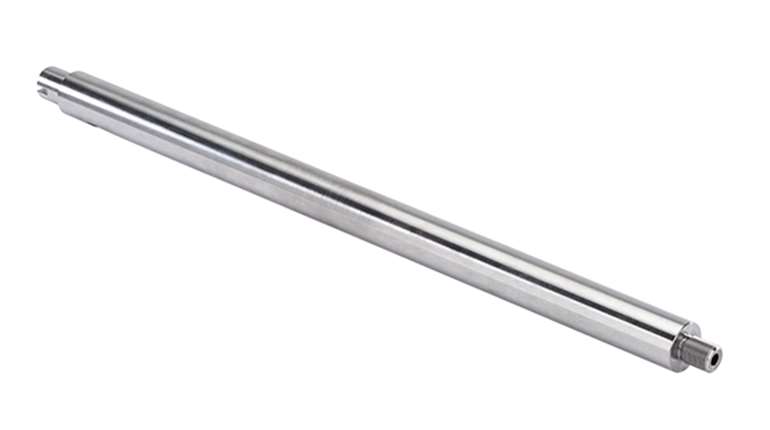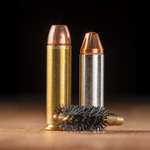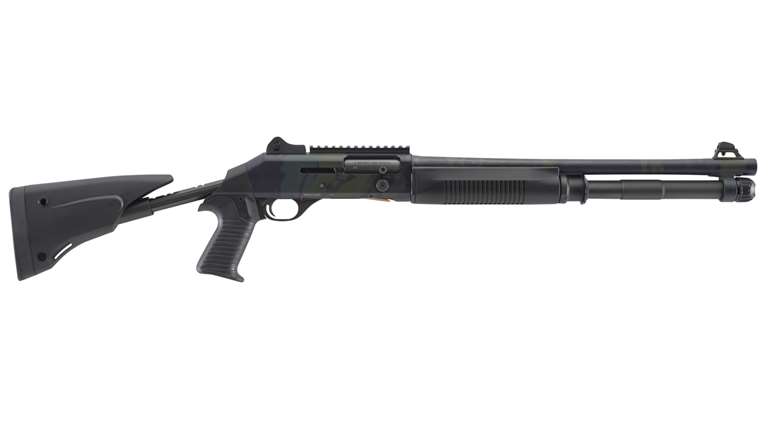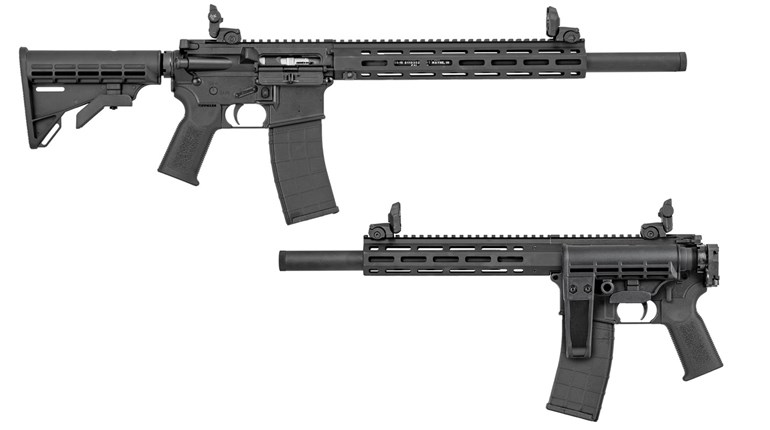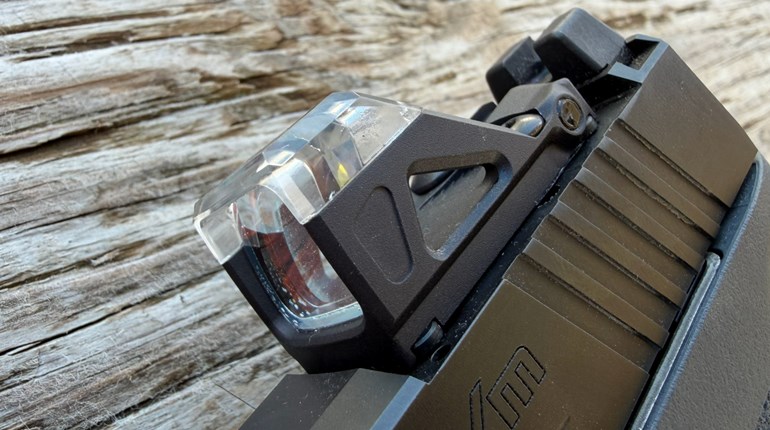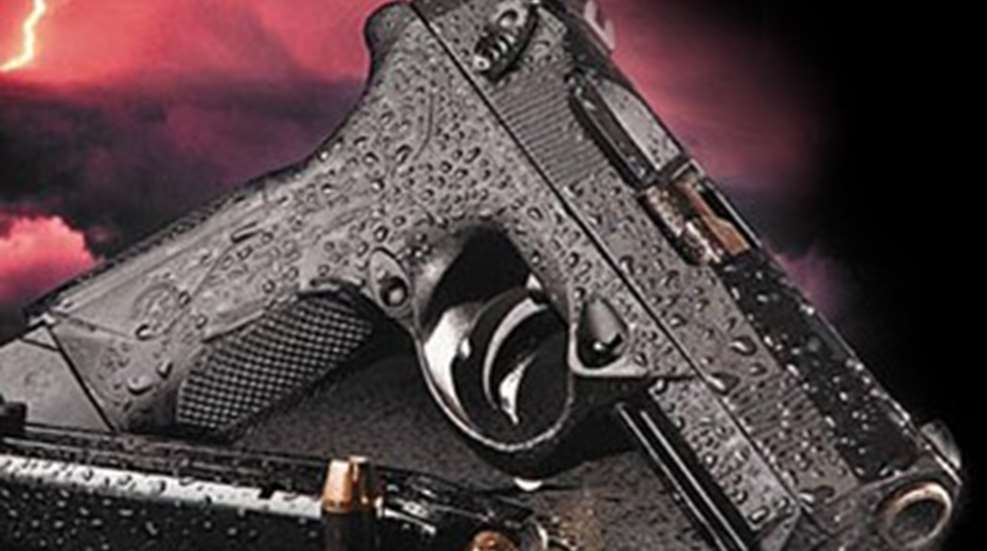
The .45 ACP is just about as traditional a handgun chambering as you can find in a contemporary handgun. Dating back to the early part of the 20th century, this classic cartridge is inexorably tied to the seminal John Moses Browning 1911 design for which the cartridge was developed. However, one of the most recent offerings to chamber this cartridge, the rotary barrel-locking Beretta Px4 Storm, is by no means a conventional handgun design.
Why is such an ultra-modern handgun design being offered in such a traditional cartridge? Frankly, the .45 ACP has recently been seeing a renaissance, having been chambered in a host of new handguns—and not all of them based on the venerable 1911. Why has this resurgence come about? Well, the .45 ACP's numerous strengths—voluminous stopping power, ease of availability, broad range of loadings, etc.—have a great deal to do with it.
There is one other significant reason why the .45 ACP is again so popular and available in such a broad range of handguns—the U.S. military. In 2005, the Special Operations Command issued a Presolicitation Notice for the intent to purchase 649,000 .45 ACP pistols for the use of SOCOM and the armed services. This pistol was to be known as the Joint Combat Pistol. And, although the JCP program may have fallen by the wayside, its requirements for the pistol influenced a nearly industry-wide move toward a .45 ACP—and a non-1911-style pistol, at that.
Today's Warhorse
The JCP program called for a number of the pistols to be configured with a manual safety, and more significantly, for the rest to operate without a manual safety. This is important as it seemed to require some sort of traditional double-action system with a decocker or a double-action-only system. Additionally, it was required to feature a high-capacity magazine of no less than 10 rounds of .45 ACP.
The result was a host of new designs that combined the traditional .45 ACP cartridge with contemporary handgun platforms. This is where Beretta arrives with arguably one of the most non-traditional designs in the category—the Px4 Storm.
However, it is important to point out that this was not the primary reason Beretta developed a .45 ACP version of the Px4. "We planned a .45 ACP version from the start in addition to our current 9 mm Luger and .40 S&W versions," said Vincent DeNiro, Beretta's Tactical Products marketing manager and the marketing manager for Beretta's American Pistol Shooter Line. "The .45 ACP is just too significant a cartridge to leave out," he continued. He did point out the Px4 Storm .45 SD (special duty) variant of the pistol was designed exclusively for the JCP program and should be available for sale on the civilian market in late 2008.
A New Twist
As with most conventional pistols chambered in potent cartridges such as the .45 ACP, some sort of recoil-operated, locked-breech operation system is the norm. The most commonly employed locked-breech system is some variation of the 1911-style system in which the barrel remains locked with the slide for the first bit of recoil movement and then is tilted downward at the breech end of the barrel to unlock it from the slide.
The Px4 pistol takes a different tack, and it is this element that is one of the design's more distinctive qualities. Rather than employing the traditional dipping/tilting barrel system, the Px4 employs a rotary barrel locking system in which cams rotate the barrel's locking lugs out of engagement from recesses in the slide after a short amount of rearward slide movement.
Beretta makes it very clear that the ergonomic handling and shooting qualities of the pistol were of paramount concern from the beginning design stages. "The rotary barrel system was chosen because it gave us the ability to make a large, powerful pistol with a lower bore axis than is common. This resulted in better shooting qualities," DeNiro said.
Why is this? With no need for the rear of the barrel to have room to dip down and unlock from the slide as with a conventional locking system, a pistol with a rotary locking mechanism can theoretically have a lower bore axis. The strengths of a lower bore axis are a reduction in perceived recoil as well as better control over muzzle flip.
Triggering Change
With most contemporary pistol designs, modularity is key—and the Px4 is no exception. One of the more distinctive features is the pistol's removable hammer module. This self-contained unit, which includes the hammer, hammer strut, mainspring and other assorted parts, is designed as an independent group that can be removed from the frame by qualified personnel for maintenance and repair.
The modular nature of the design also carries over to the systems of trigger operation. As a matter of fact, the pistol is designed to be offered in four different systems, designated as types G, F, D and C.
Types G and F both work on a traditional double-action system of operation, with the first pull of the trigger both cocking and releasing the hammer through a long and relatively heavy trigger pull. Subsequent shots feature a light and short single-action pull. The Type G system incorporates an ambidextrous slide-mounted decocking lever that safely drops the hammer of the pistol and then automatically moves back into the fire position. The Type F configuration features an ambidextrous combination safety/decocker lever that both safely drops the hammer and puts the pistol on safe with the levers remaining in the down position. A simple sweep of the slide-mounted lever makes the pistol ready to fire. The G and F types share both the same slide assembly and hammer module system.
The D variant operates as a double-action only. In it, there is no safety/decocker lever present as the pistol features a long and relatively heavy trigger pull to both cock and release the hammer for each shot. The C variant is a constant action trigger system that offers a lighter and shorter trigger pull than the more traditional Type D variant. Both the D and C types share the same slide assembly, but feature different hammer modules. The slides of the D and C types are not interchangeable with those of the G and F types.
To ensure safety, the Px4 has a firing pin block safety designed to prevent forward movement of the firing pin unless the trigger is pulled completely to the rear.
Big Brother
The .45 ACP variant of the Px4 is currently available with the Type F trigger system, although there are plans for a Type G offering in the near future and D and C versions later.
The .45 ACP version of the Px4 is not simply a variant of the earlier 9 mm Luger/.40 S&W series of pistols. Although they share the same operating system and design, the .45 version required developing all-new upsized frames, slides, barrels, etc. "This was not a cheap process, but it was worth the effort to get the .45 ACP chambering into the line," DeNiro explains.
Handling-wise, the .45 ACP Px4 Storm is surprisingly comfortable in the hand considering that it is a high-capacity, big-bore pistol. As a matter of fact, the modularly designed pistol has a removable backstrap system that allows users to customize grip size. Three changeable backstrap inserts—small, medium and large—are included with each pistol and can be switched easily in minutes.
The controls are well designed and simple. Adding to the customizable nature of the design is the fact that the pistol features an interchangeable magazine-release button system in which either a small, medium or large button can be fitted onto the reversible magazine-catch assembly. As with the backstrap inserts, these three buttons are also included standard. The other controls include a slide catch located on the left side of the pistol and the ambidextrous safety/decocker located at the rear section of the slide.
Visually, the pistol features an extremely racy design similar to Beretta's Neos and Cougar pistols. This is no coincidence. Beretta employed the skills of the design firm of Giugiaro to help craft the shape and look of the Px4 just as it did with the other pistols.
The slide is contoured to reduce the blocky profile often encountered on conventional versions. Advantages of this include a snag-resistant profile and ease of reholstering. The slide is somewhat thick, though, no doubt due to the rotary barrel locking system that requires more room from side to side than a dipping/tilting barrel system.
Healthy amounts of molded-in checkering are present on the frontstrap of the frame as well as the on the interchangeable backstraps to ensure shooters maintain purchase during firing. An M1913 mil-spec accessory rail is located on the dustcover of the frame.
The Nuts and Bolts
I was impressed by the easy disassembly procedure of the Px4. To take down the pistol for cleaning and maintenance, simply pull down on both sides of the disassembly latch located forward and above the trigger guard. Once this is done, the slide can be pulled forward and off the frame. There is no need to pull the trigger or even rotate a lever or latch.
Once this is done, turning the slide over and looking into it reveals the rotary barrel system. Housed under the barrel and containing the rear section of the recoil spring assembly is what Beretta calls the "central block." It has a protrusion that interfaces with a machined groove on the exterior diameter of the forward section of the barrel's chamber. Under recoil, this protrusion causes the barrel to rotate and unlock its lugs from the recesses in the inside of the rear of the slide.
To further disassemble the gun, simply relieve the spring pressure on the central block, then lift it and the recoil spring assembly away from the slide. The barrel can now be rotated and lifted up and out of the Storm's slide assembly.
Twisted Results
I took the handgun to the range with a selection of Federal, Winchester and Remington ammunition. During the course of several boxes of ammunition, I found the pistol to be pleasant to shoot and free of malfunctions. I tried the flush-fitting 9-round magazine and the extended 10 rounder with no problems. Empty cases were consistently thrown back and to the right roughly 8 feet.
Of note during testing was the fact that the pistol exhibited a slight bit of torque during recoil, most likely due to the rotary action of the barrel. As a southpaw, I found that it turned the pistol into my hand and was not really a problem. For a right-handed shooter, the movement would theoretically be turning it away from the strength of their hand. However, in practice I doubt this would be much of an issue.
I had initially fitted out the Px4 with the small backstrap insert, but during testing I changed to the medium one and found it to be a better fit. It's nice to have this option—one that would not have been available on a more conventionally configured steel-frame pistol. All the controls functioned well, and I found them to be easy to manipulate. Also, despite the fact that I do not personally care for slide-mounted safety levers, the Px4's ambidextrous safety/decocker lever was a pleasure, although it was a bit sharp around the edges.
Having become accustomed to most polymer-framed pistols having some sort of striker-fired system of operation, it was interesting to be able to cock the hammer for single-action shots. The double-action trigger pull, although a bit on the heavy side, was reasonably smooth. The single-action trigger was also heavy, but broke cleanly after a bit of take-up.
A Gathering Front
While the .45 ACP will likely always be associated with the 1911 in many shooter's minds, pistols like the Px4 Storm are moving this cartridge into the modern age. However, the strengths and benefits of this intriguing design should make it appeal to anyone who wants a high-quality .45 ACP pistol—no matter how much of a traditionalist they might be.













